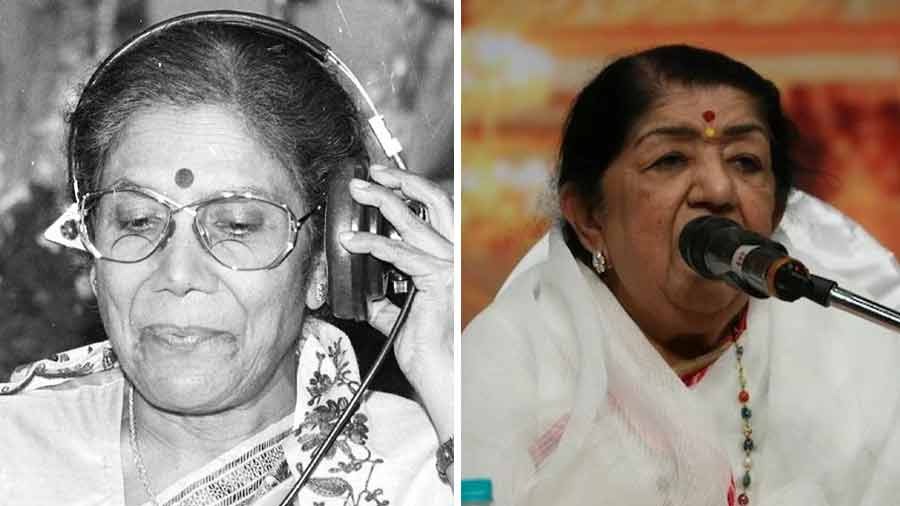India lost two of its most popular singing icons, Lata Mangeshkar and Sandhya Mukhopadhyay, within a span of nine days. Both, in their nineties, were afflicted by the dreaded Covid-19 virus and could not recover despite prolonged hospitalisation. Padma Bhushan Pandit Ajoy Chakrabarty, a stalwart of Indian music, who knew both closely, explained in this freewheeling interview to Jayanta Basu that what made them special. Excerpts…
Jayanta Basu: We lost two musical icons within a span of a few days... your thoughts?
Pandit Ajoy Chakrabarty: This is a huge blow to Indian music, two great artists leaving within such a short span. Whenever someone takes their names, you tend to get goosebumps. They were musicians of the highest quality. However, not only Lata ji and Sandhya di, so many musicians lost their lives to Covid… it seems Covid is particularly harsh to the musicians.
Both had extremely successful musical careers spanning over five decades, throughout which they maintained impeccable standard and consistency. How was it possible?
Apart from the natural talent they both possessed, and their tremendous dedication to music; the key was the tanpura. I can vouch from my own experiences as a musician that the tanpura is the only instrument in the world that prepares somebody’s voice, adds the ring of purity to it, and both the great artists had exposure to tanpura from an early age.
Rehearsal was a constant factor in Lata ji’s home, as her father Pandit Deenanath Mangeshkar was an exponent of Hindustani classical music. Two tanpuras were always used and that helped tune Lata ji’s voice to such perfection. Similarly, in the case of Sandhya di as well, the tanpura played a key part in shaping that immortal voice.
Moreover, both attached so much importance to the lyrics of the song, something my guru Padma Bhushan Pandit Jnan Prakash Ghosh often said… Actually, singing is nothing but adding a tune to the words after understanding them to the core.
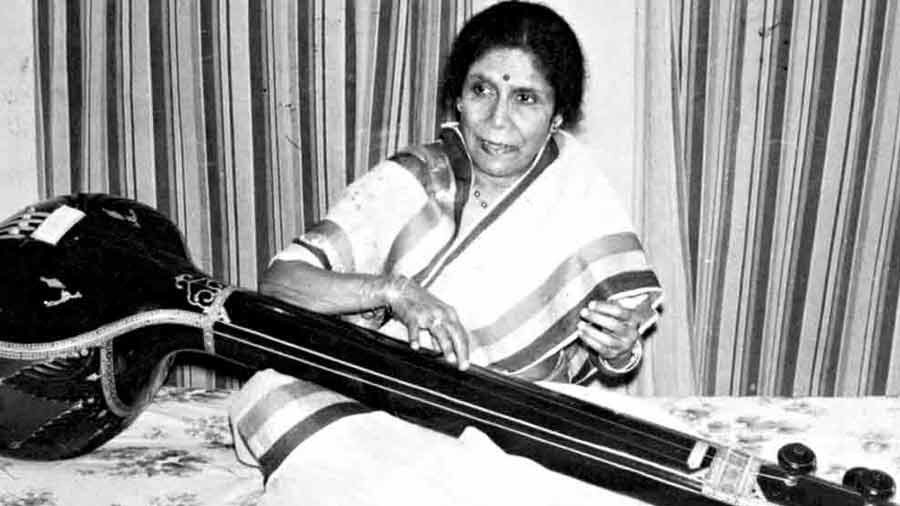
‘The tanpura played a key part in shaping Sandhya di’s immortal voice’ TT archives
Both were so successful and reached such great heights; what was the secret?
The constant fear of not being perfect and facing criticism. Today, we often see mediocrity dominate. But there was no place for mediocrity during the golden periods of their careers. This constant search for perfection, till she breathed her last, made Lata ji the successful musician that she was. And the same thing happened for Sandhya di as well. I remember when Sandhya di was already a very popular musician, often after a kheyal performance, she would enquire, often pester, “was my pancham (the fifth note) struck to tune?” People do not become successful overnight, the journey is important.
Lata Mangeshkar wanted to become a classical artist…
Yes, she wanted to be a classical artist. In fact, her first public performance was rendering of a short khayal in Sholapur when she accompanied her father in a public performance. But the untimely death of her father pushed Lata ji to become a singer in films as the financial return was more. And how she blossomed there! She might not have become a classical artist, but she created so many classics. My guruji once said that if she had pursued classical music, she surely would have become a famous classical artist, but we would have lost a versatile musical genius.
Many feel that Lata ji used to have an ethereal feel of purity and clarity in her voice, almost like a god-given quality…
It’s not fair to pass everything off in the name of god or turn humans into gods, like we tend to do. One should try to understand the minds of these persons to realise what they did to reach such a level, and if possible, learn from them. Purity of voice can only be there when purity of frequency, purity of vocal cords and purity of mind come together — and that’s exactly what happened in the case of Lata ji.

Lata Mangeshkar and Salil Choudhury TT archives
Lata ji sang thousands of songs and lent her voice to a large number of actresses for over five decades, and in almost every song it seemed like her voice was completely in sync with the actress who was giving the lip…
Lata ji always used to enquire about whom she was singing as and was used to keep the personality in mind. A number of times, I had the opportunity to talk to her and also hear her voice live, and I must say there was an incredible penetrative power in her voice; as does Asha ji. Such power comes from human insight. She always took every work as the most important work of her life; and that’s the biggest clue.
If Lata ji had that sense of extreme tranquility, Sandhya di was the queen of romantic Bengali songs — particularly the magic that she was used to create for Suchitra Sen — that contributed a great deal to the Uttam-Suchitra pairing…
Right, what great songs Sandhya di rendered for Suchitra Sen and created those immortal moments. Personally, I feel the key was the fact that Sandhya di’s voice had a touch of vibration that was in sync with Suchitra Sen’s voice; they used to sound so similar. Moreover, so much great music was created in that era, and Salil Choudhury played a pivotal role in Sandhya di’s success. They had extremely close professional relations, and Antara, Salil da’s daughter, used to tell me how Salil da pushed Sandhya di till the songs reached the level that he wanted. And for that matter, Salil da also played an important role in Bombay to thrust Lata ji into greatness with the numerous songs they did together.
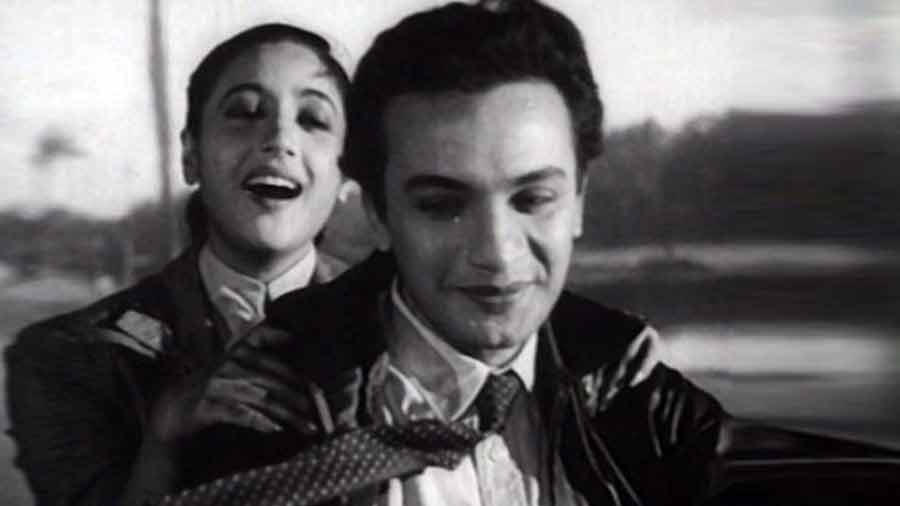
Sandhya Mukhopadhyay contributed a great deal to the magic of the Uttam-Suchitra pairing
Lata ji had a close relationship with Bengal, the Bengali language and Bengali musicians…
Anil Biswas was the first Bengali music director with whom Lata ji worked. Then she came close to many other immortal Bengali musicians and music directors like Hemanta Mukhopadhyay and Salil Choudhury. While she had great sense of respect for Hemanta Mukhopadhyay, she was friendly with Salil Choudhury. And as for the Bengali language, Maharashtrian and Bengali have a lot in common, which helped her understand Bengali nuances better and render them accordingly. She had actually read novels by Sarat Chandra Chattopadhyay and Bankim Chandra Chattopadhyay to understand the elegance of the Bengali language.
You had a great personal relationship with these singers…
While Sandhya di and I were guru bhai and bon (disciples of the same guru) and learnt together for about three years from Ustad Munawar Ali Khan saab, son of Ustad Bade Ghulam Ali Khan saab. We had great camaraderie and last met before the pandemic started, when I had the opportunity to hand over a lifetime achievement award to her in a programme.
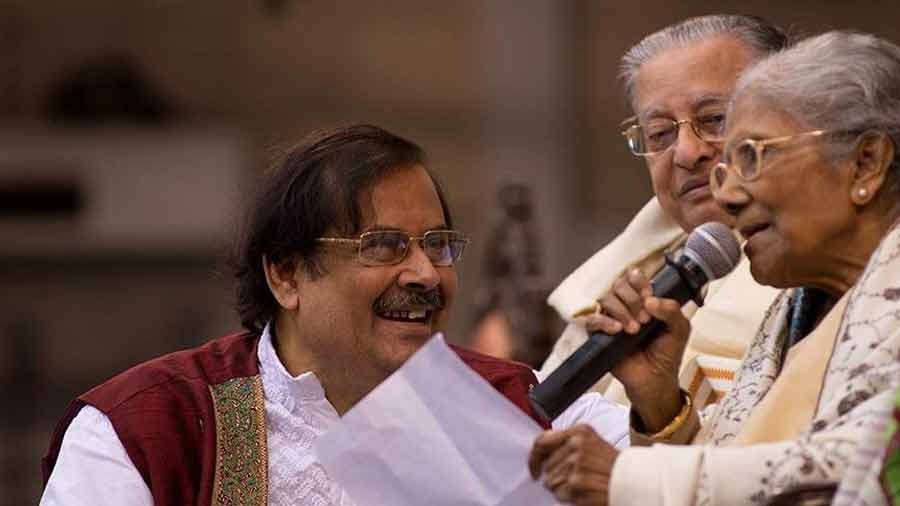
Sandhya Mukhopadhyay and Ajoy Chakrabarty were ‘guru bhai’ and ‘bon’, and learnt together for about three years from Ustad Munawar Ali Khan @Ajoy Chakrabarty/Facebook
As for Lata ji, I first met her in 1989 when she received the Dadasaheb Phalke Award and I received the Best Male Playback Singer Award from President Ramaswamy Venkataraman at the National Film Awards. On that occasion at Delhi's Siri Fort, I saw her incredible popularity — the president himself stood up with the crowd to greet her when she entered! As luck would have it, we sat side by side. Subsequently, we became very close and whenever I used to go to Mumbai, more often than not, I used to end up at her house. In fact, she called me about three months ago and requested me to be part of the board of a proposed university in Maharashtra that is coming up in the name of her father, and I readily agreed.
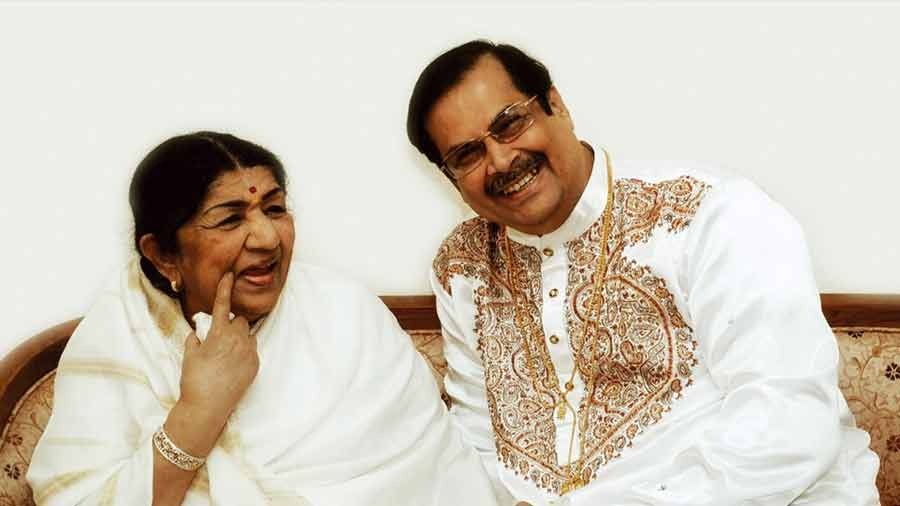
Lata Mangeshkar and Ajoy Chakrabarty @Ajoy Chakrabarty/Facebook
She was quite close to my family too and used to love my daughter Kaushiki very much. It is my great privilege that she once heard a 30-minute performance of mine live, by proxy, through the mobile!
How should such great artists be remembered and how can their legacy be carried forward?
I firmly believe that an institute, or a ‘musical laboratory’, should be set up, be it by the central or state government to research the whole dynamics of film music rendering by maestros like Lata Mangeshkar, Sandhya Mukherjee and other great artists of the golden era. Unless this is done, the legacy of Lata ji, Sandhya di and many others will be lost and we will be stuck with more musical mediocrity.
